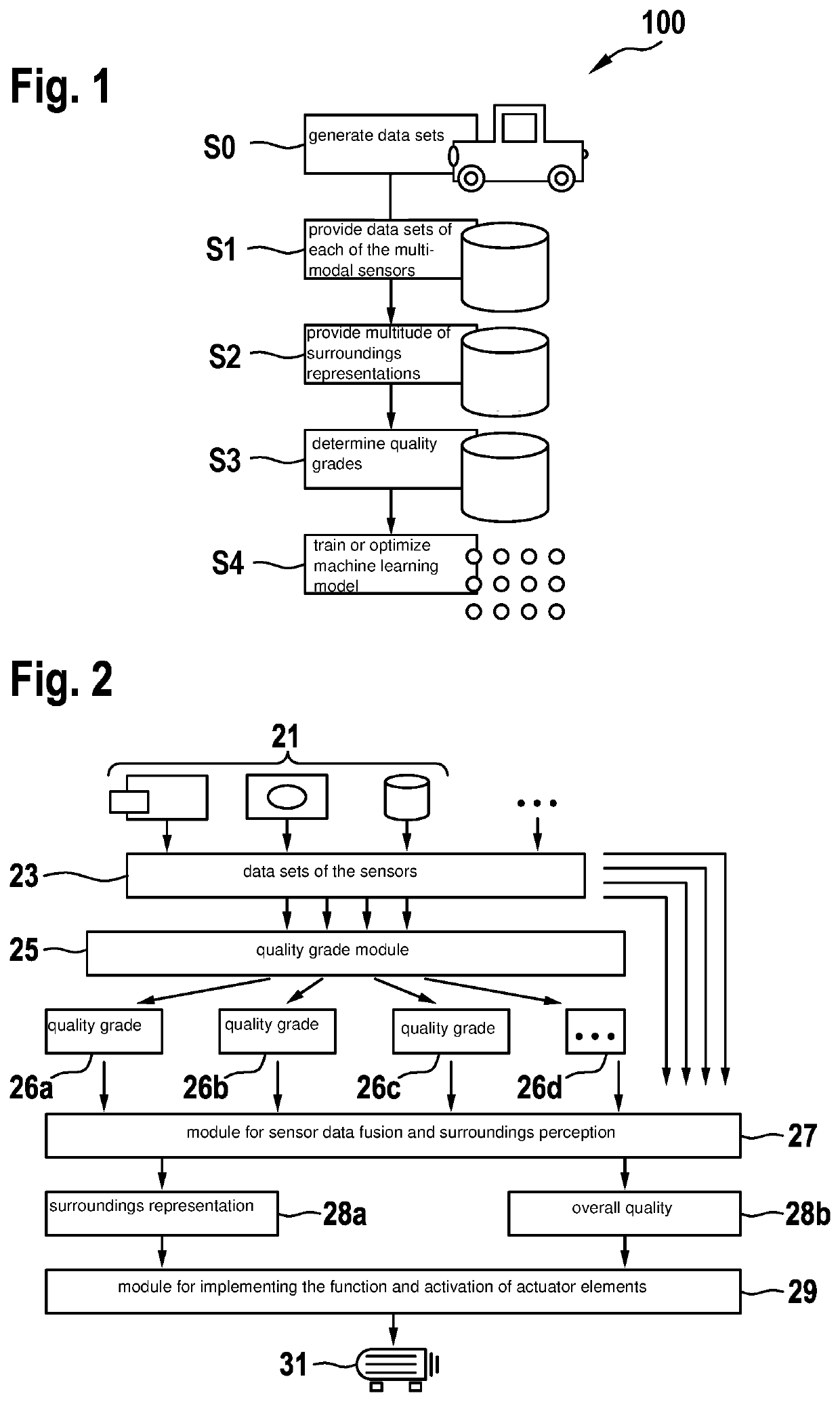Method for determining a quality grade of data sets of sensors
a technology for data sets and sensors, applied in the field of methods for determining the quality grade of data sets of sensors, can solve the problems of deterioration of quality measures, difficult to solve, and high false-negative identification rate, and achieve low latency of surroundings perception, small and/or more cost-effective
- Summary
- Abstract
- Description
- Claims
- Application Information
AI Technical Summary
Benefits of technology
Problems solved by technology
Method used
Image
Examples
Embodiment Construction
"d_n">[0112]FIG. 1 shows a flowchart of a method 100 for training a machine learning model for determining a quality grade of data sets 23 from each of a plurality of sensors 21. In a step S0, data sets 23 (sensor raw measured data) are generated in advance by each of a plurality of sensors 21, the plurality of sensors 21 being configured to generate raw measured data, from which a surroundings representation may be determined.
[0113]This plurality of sensors 21 may, for example, be a vehicle equipped with the plurality of sensors 21 or a fleet of vehicles thus equipped.
[0114]In a step S1, a multitude of data sets 23 of each of the plurality of multimodal sensors 21 is provided by a corresponding multitude of surroundings representations. This means, therefore, that the plurality of multimodal sensors 21 has generated a multitude of data sets 23 corresponding to a multitude of surroundings representations, which are provided in this step in order to obtain a so-called unlabeled sampl...
PUM
 Login to View More
Login to View More Abstract
Description
Claims
Application Information
 Login to View More
Login to View More - R&D
- Intellectual Property
- Life Sciences
- Materials
- Tech Scout
- Unparalleled Data Quality
- Higher Quality Content
- 60% Fewer Hallucinations
Browse by: Latest US Patents, China's latest patents, Technical Efficacy Thesaurus, Application Domain, Technology Topic, Popular Technical Reports.
© 2025 PatSnap. All rights reserved.Legal|Privacy policy|Modern Slavery Act Transparency Statement|Sitemap|About US| Contact US: help@patsnap.com

